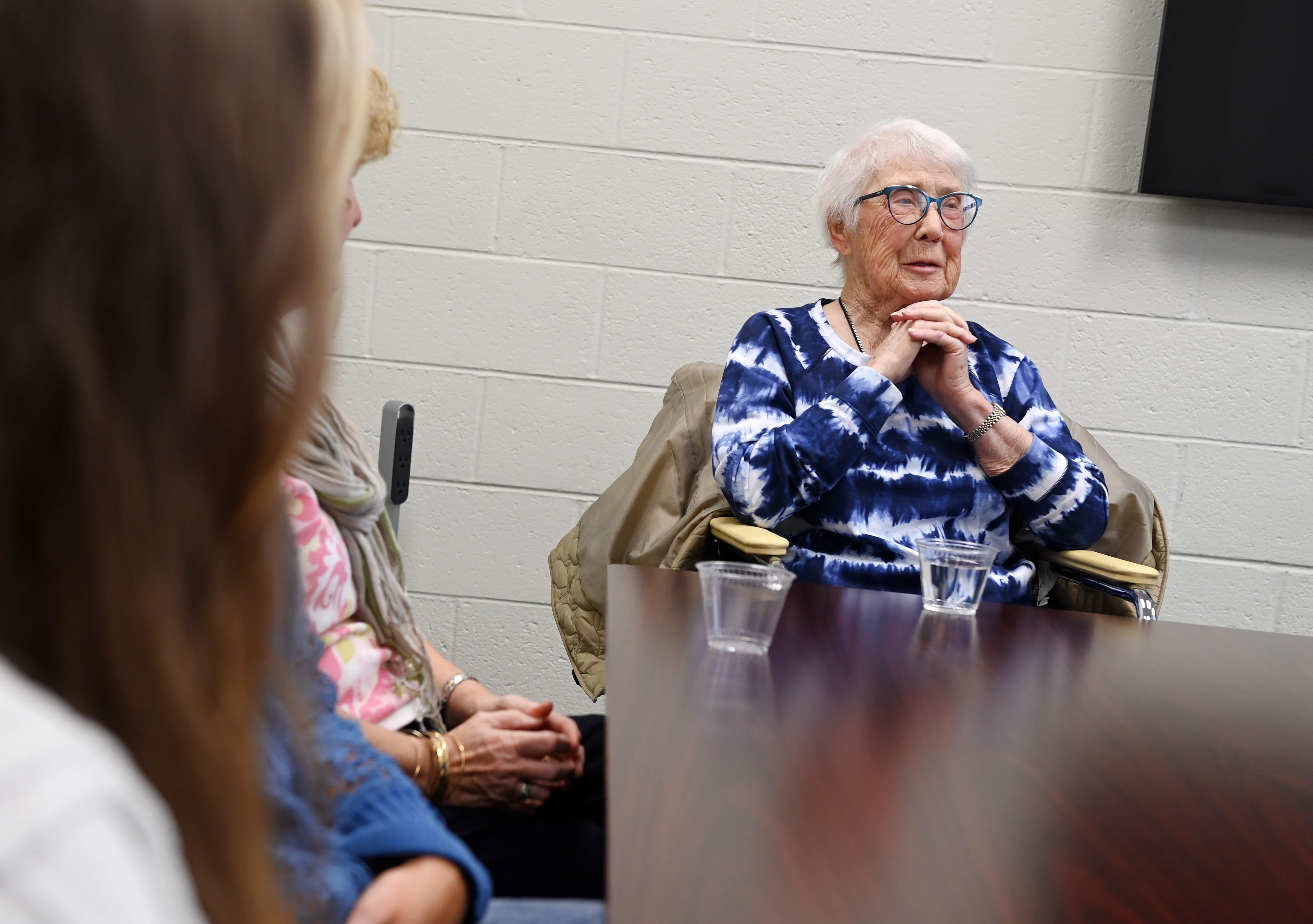
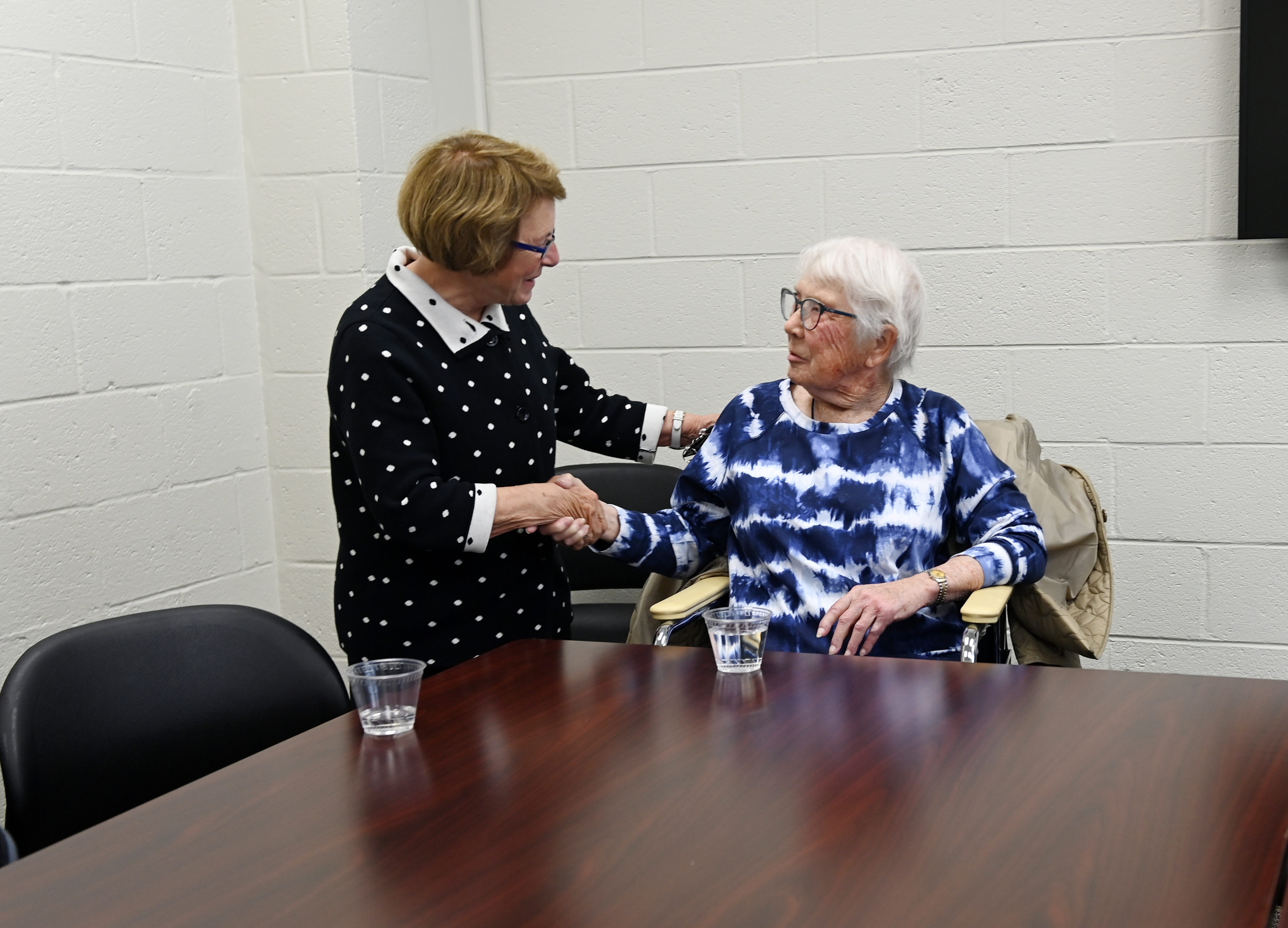
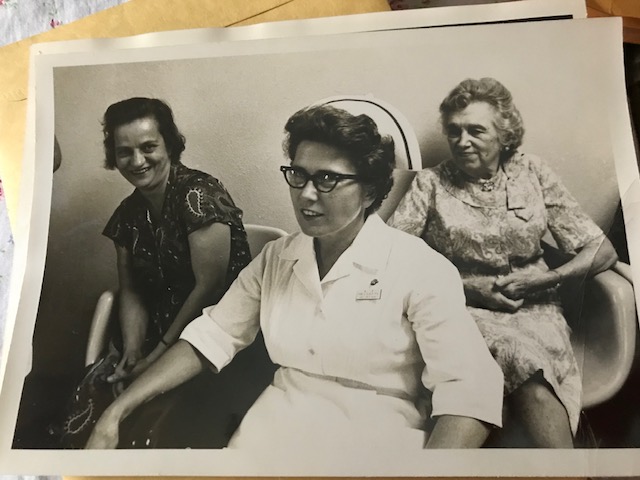
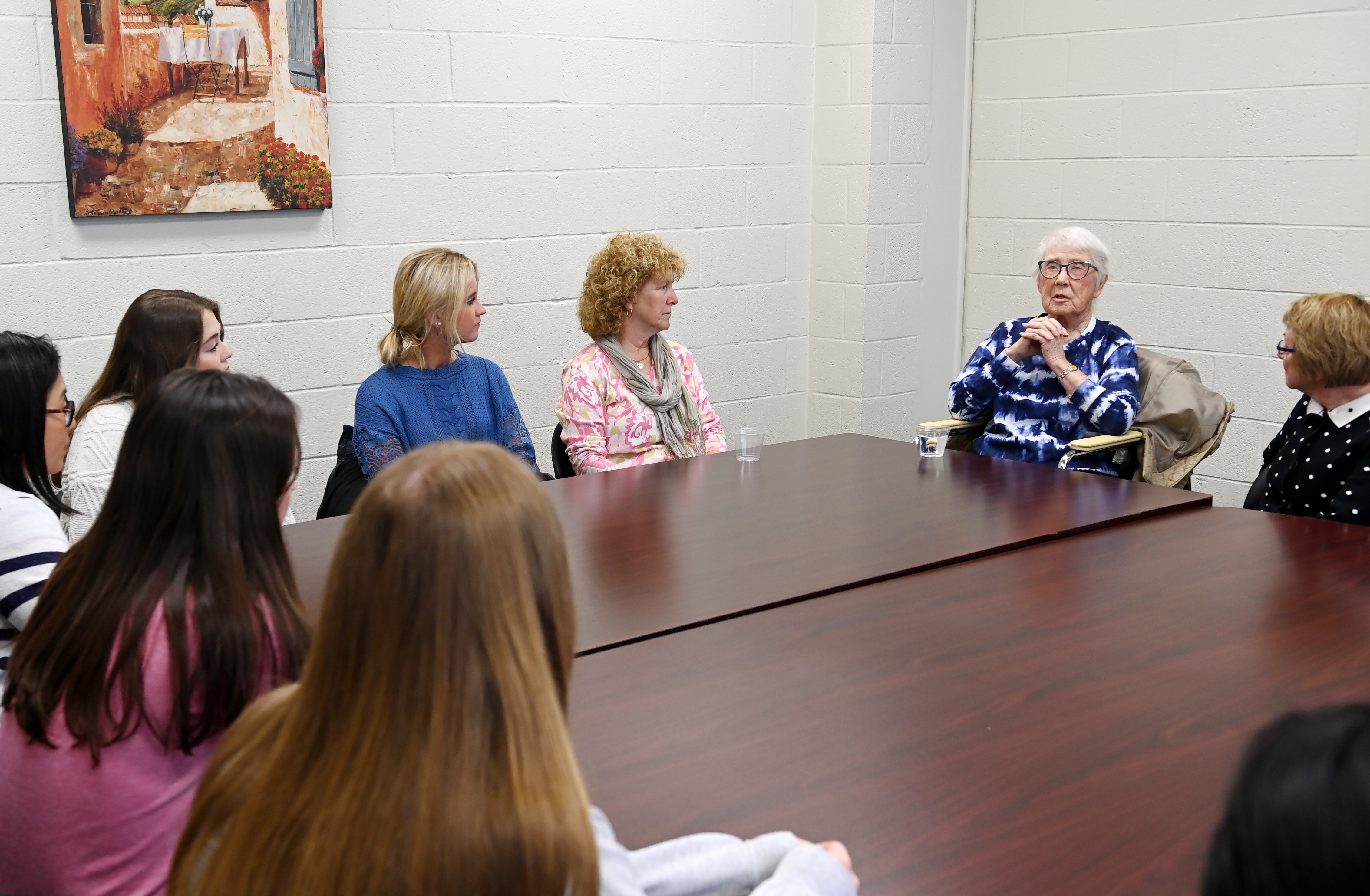
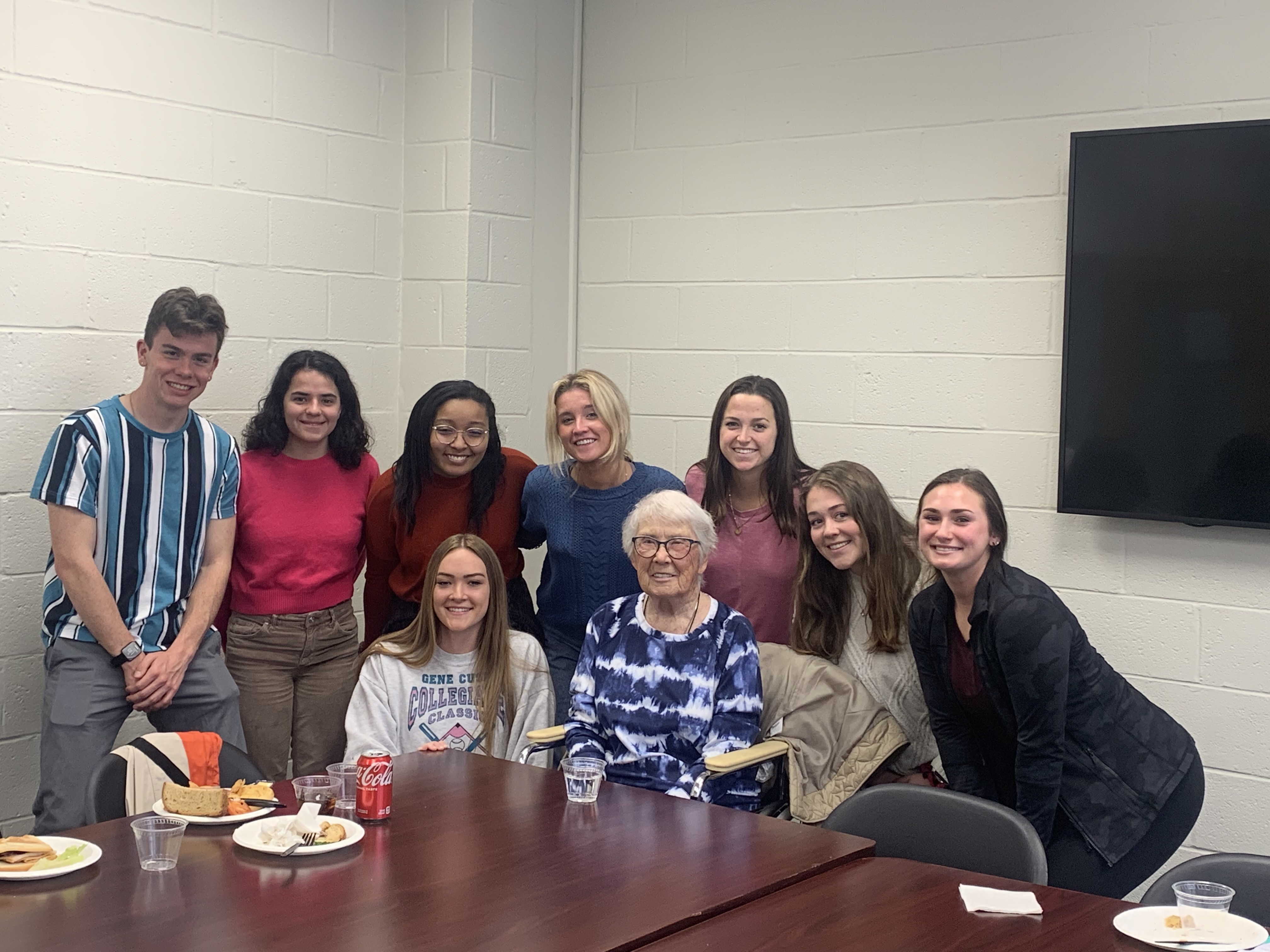
Charlotte Olson
Centenarian Charlotte Olson, B.S.N.E. 1946, M.S.N.E. 1956, kicked off the Conway School of Nursing Alumni Speaker Series during a lunch with students in early April.
Born during a blizzard in Jamestown, N.D., on February 22, 1922, Charlotte was inspired to become a nurse after being treated for measles at the Mayo Clinic as a young child. In 1941, she was recruited by St. Elizabeth’s Hospital to join the Cadet Nursing Corps in Washington, D.C.
Charlotte told the students about the long train trip to D.C. from North Dakota. The hospital paid for her B.S.N.E. at Catholic University, and she received a small stipend, but it was still very difficult to be a student during World War II. Food and supplies were rationed, so students were often hungry and cold. At the time, most of the students at Catholic University were nuns and priests. Fifty students started the nursing program with her, but only 28 graduated. Many left to get married and were not allowed to continue their studies. She remembers Eleanor Roosevelt coming in a plain car to speak at their graduation.
Charlotte then discussed her 40-year career at St. Elizabeth’s, where she rose to the role of director of nursing and oversaw a 1,000-bed unit. Her starting salary was $1,263 per year, which was less than the city’s garbage collectors were making at the time. She and her fellow nurses found the employment flier for garbage collectors, took it to the hospital’s leadership, and successfully demanded a raise. She became a supervisor early in her career, which led her back to Catholic University to get her master’s degree.
At the time, diagnosis and treatments for psychiatric disorders were limited. The students were shocked to hear that at one point during the war, they were receiving 80 patients a day. All were the same age as Charlotte. She told the students about the use of insulin shock therapy and lobotomies — common treatments at the time. "We had our hearts, heads, and hands, and that is all we had. We were as helpful as we could be and tried to keep them comfortable, but it was a long, hard time for them and for us."
A student asked how Charlotte coped when her options were so limited and she ran out of patience. She explained, "You had to bury your own emotions to be able to deal with the patients' emotions." Charlotte told a frightening story of a large, violent patient who was breaking the windows out of the inpatient unit with a ping pong paddle. Using the only tool at their disposal, persuasion, she and her colleagues bravely talked the young man into a calmer state. When asked if she had ever thought of quitting, she exclaimed, "Oh, heavens no! I never even considered it!"
She shared a few other stories with the students, including her memories of riding on the back of a fire truck down F Street banging pie tins together in joy at the end of the war. When asked the secret to aging well, Charlotte said she "worked hard, lived carefully and well, and still does a bit of gadding around."
